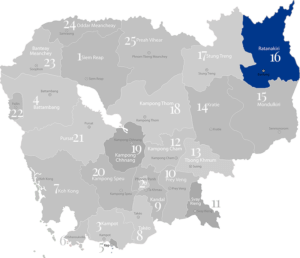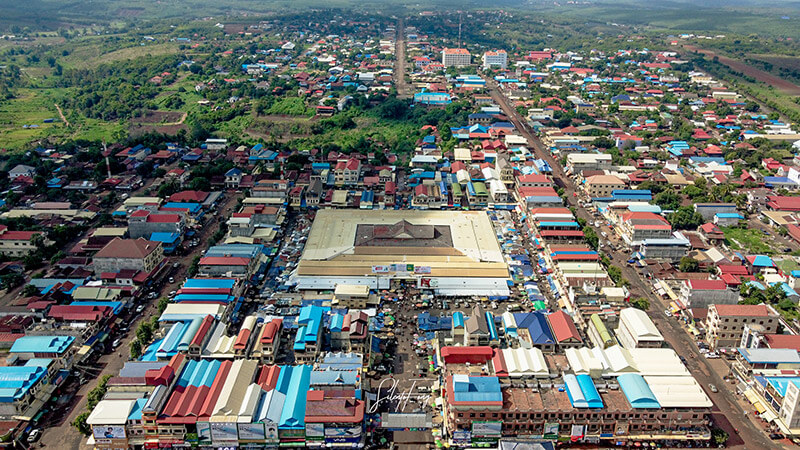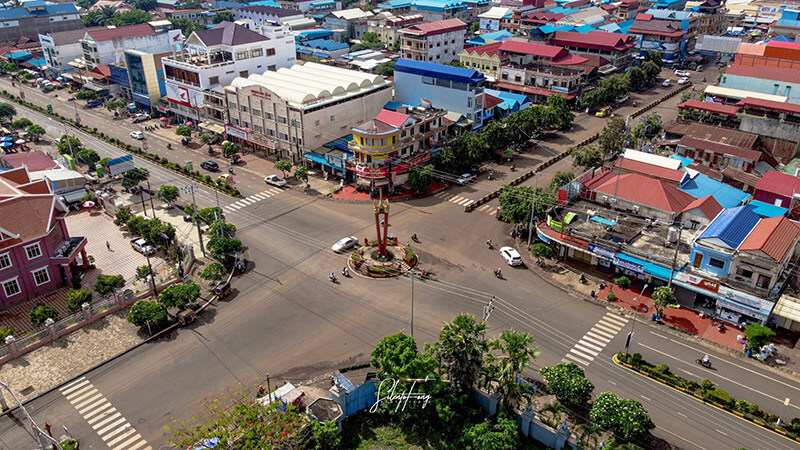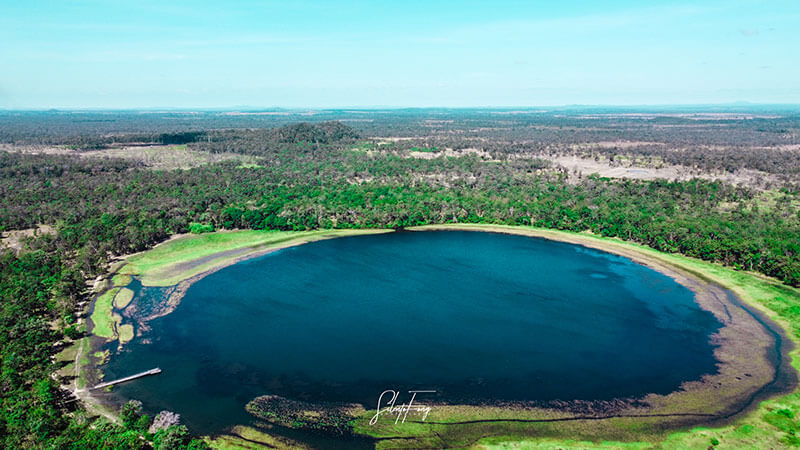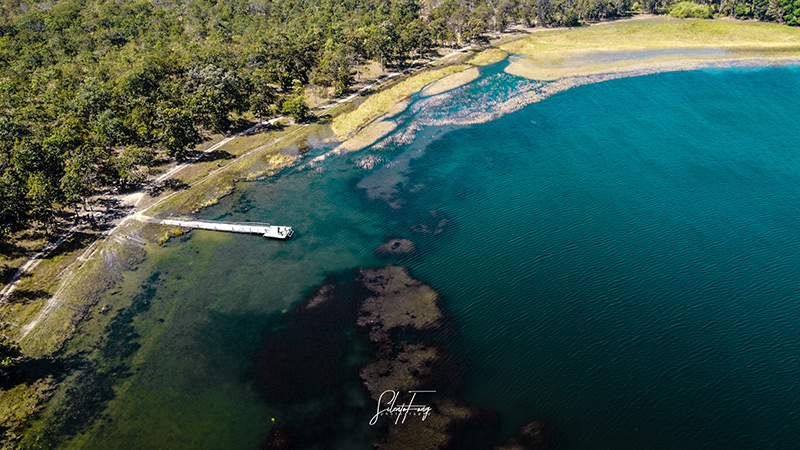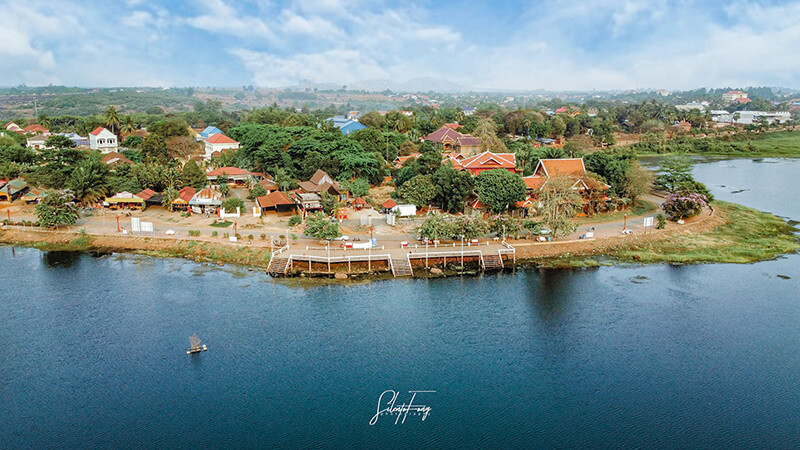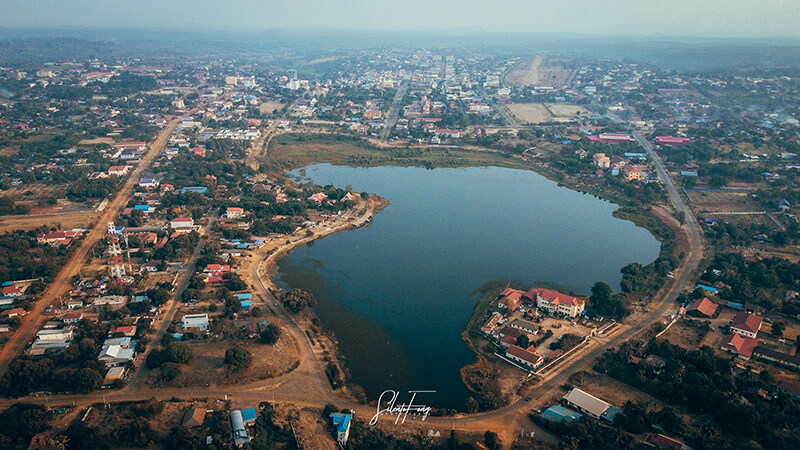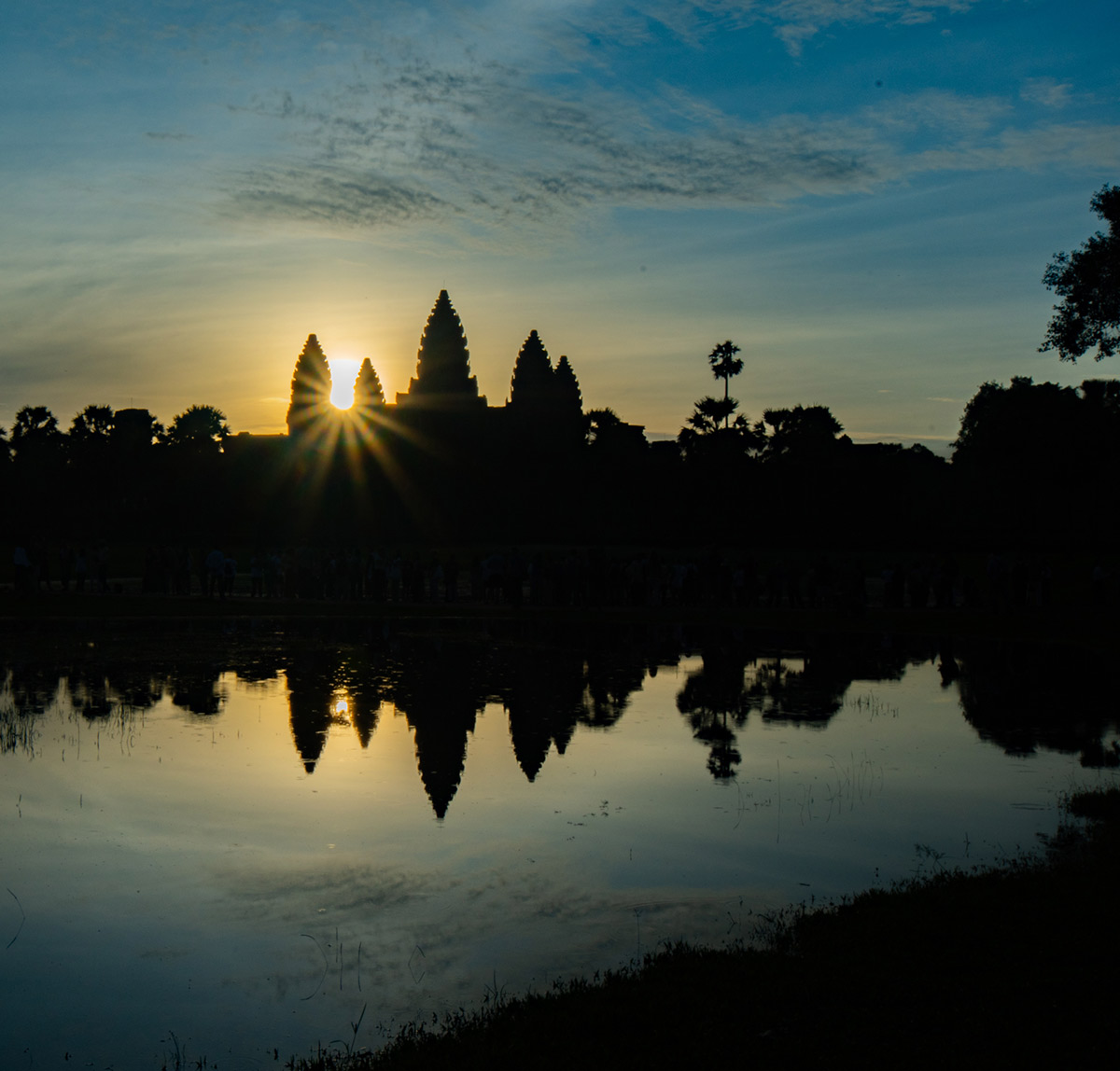Ratanakiri (Khmer រតនគិរី) also Rattanakiri or Ratanak Kiri is the north-easternmost province of Cambodia. It borders Laos to the north and Vietnam to the east. The region is known for its gemstones, such as zircon. So it seems more than logical that the name of the province describes this fact. Translated, Ratanak goes back to the Sanskrit word “Ratna”, which means “precious stone”. Kiri comes from the Sanskrit word “Giri” and, compared to Phnom, is the less common word for “mountain” in the Cambodian language. Ratanakiri can therefore be translated as “the gold in the mountains”, “gold province in the mountains”, “place of gemstones and mountains” or simply “gemstone mountain”.
It is mainly nature lovers who are drawn to Ratanakiri with its partly untouched natural landscapes. Trekking tours lasting several days in the nature reserves and national parks are particularly popular – with a bit of luck, you might spot gibbons or even tigers in the wild. Also the Airavata Elephant Foundation, waterfalls, a visit to the indigenous tribes in Ratanakiri and/or Yaklom, the circular volcanic lake in the south of the provincial capital Banlung. Those who prefer nightlife and parties should perhaps consider in advance whether the journey from Siem Reap and Phnom Penh, which takes several hours, is worthwhile. Especially as it takes time to explore the area. We recommend a stay of at least 3 days.
Banlung – the provincial capital of Ratanakiri
Banlung does not have much to offer from a tourist perspective. However, a significant plus point is that almost all the sights and excursion destinations in Ratanakiri – at least those in the vicinity of Banlung – can be reached relatively easily from here.
Tips for excursion destinations in and around Banlung:
Ethnic minorities
The indigenous peoples in particular are characteristic of the province with its extensive mountain ranges. Even today, 6 different tribes still live in Ratanakiri.
Kreung – គ្រឹង
Brao – ព្រៅ
Tumpoun – ទំពួន
Jarai – ចារ៉ាយ
Kavet – កាវែត
Kachak – កាចក់
It is possible to visit the villages. For example, the Kreung village (Cha Ong) ចាអ៊ុង – with a waterfall of the same name about 8 km north-west of the provincial capital Banlung.
However, the road is a disaster – by car, motorcycle and tuk tuk it’s ok so far. During the dry season – November to April/May – the quite dusty journey takes around 20 minutes. But during the rainy season it is a real disaster. Then you need a jeep to get there at all. These are the words of Choeun Van.
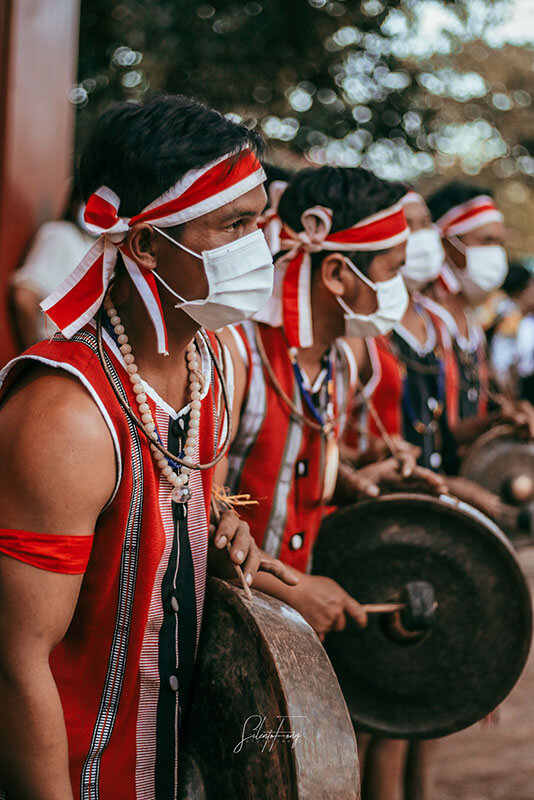
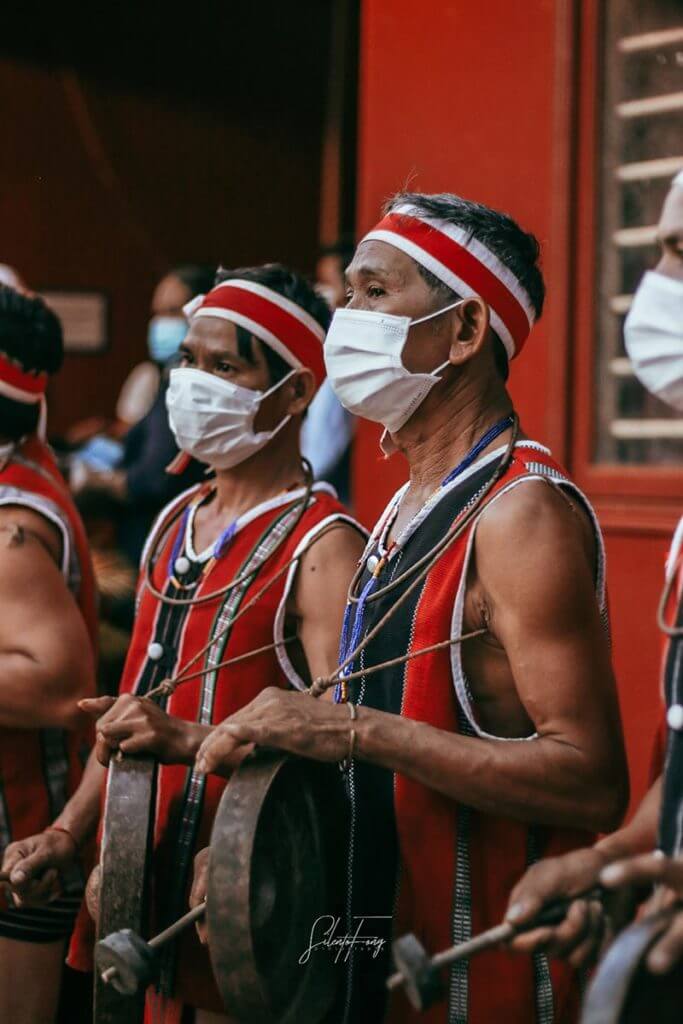
The Cambodian “Joom Reab Sour”, the formal form of address for “Hello”, is “Tangala” in the Kreung language. There is no difference between formal and informal language in Kreung.
Choeun Van comes from the Kreung. Until the age of 6, he and his siblings, like all the other children in the village, only learned the Kreung language and not Khmer.
The children only learn to speak the Khmer language at school. Writing is completely new to them. The reason: the indigenous languages have no system. There is no text, as they are purely spoken scripts.
How many hill tribe people live in the villages in Ratanariki is not known, he says. They are all registered as Khmer. There is no mention of their indigenous descent in their passports or on their ID cards. Nevertheless, the Stephan Loose travel guide states that around 80,000 of the so-called “highland Khmer” (Khmer Loeu), also known as Chunchiet, are said to live in Ratanakiri.
Cemeteries of ethnic minorities
The cemeteries of individual hill tribes can be visited with an officially authorized escort. Especially the Jarai graves, which impress with their huge wooden carved totems. In contrast to the Brao and Kavet, the Jarai, Kreung, Tumpuon and Kachak leave the graves to themselves after 3 days of mourning ceremonies.
Volcanic lake: Yaklom
The circular and picturesque Yaklom Lake (also known as Yeak Laom) lies in the middle of the jungle 4 km east of Banlung. 800 m wide and up to 50 m deep, the approximately 4,000-year-old volcanic lake is considered sacred by the indigenous highland Khmer people. A 3 km long hiking trail leads around the lake. Due to the belief in spirits among the ethnic groups of this region, neither the surrounding forest may be cleared nor any buildings erected. Water, forest and land spirits are in charge at this place.
Fortunately, swimming in the lake is permitted. Locals also like to take a trip to Yaklom, including a picnic. Out of respect for the spirits, it is advisable to wear a T-shirt when swimming.
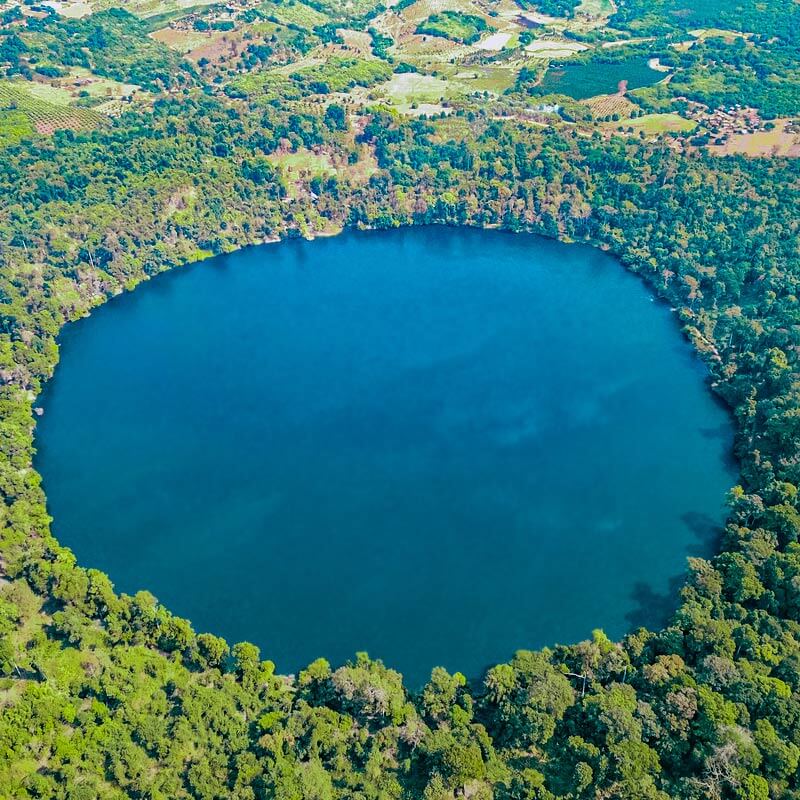
Access to Yeak Loam (on the north-eastern shore via an information center for tourists) costs USD 2, for a moped you pay an additional 2,000 riel, the equivalent of 50 cents. The inhabitants of Tumpuon manage the lake and receive the income for it. The Cultural and Environmental Center, located about 500 m to the west, offers a small exhibition as well as souvenirs and handicrafts from the ethnic minorities for sale.
More lakes in Ratanakiri
70km south of Banlung is Ka Laeng, a comparatively unknown lake in the Lumphat Wildlife Sanctuary. Seen from the air, it looks like a human eye. There is a circular path and a footbridge that leads into the water.
If you don’t want to go quite so far away from Banlung – approx. 55 km south of Banlung – you will find a natural idyll at Lumkut Lake (known as Lomkod Lake in English). It also has a circular trail that takes around an hour.
In the northern outskirts of Banlung, Kan Sen Lake (also known as “Kansaeng Lake” or “Krong Ban Lung”) is particularly popular with the locals at sunset.
Waterfalls in Ratanakiri
There are four waterfalls in Ratanakiri and in the more or less immediate vicinity of Banlung. The drive there leads through jungle and cashew and rubber plantations. As the dry season begins, the amount of water gradually decreases. If you visit between March and the beginning of the rainy season in June, they are comparatively less “rushing”.
Ou Sean Lair Waterfall
- Location: the furthest waterfall from the provincial capital Banlung at approx. 30 km
- Height: 4 steps, each 4 meters high and 30 meters wide.
- Special features: Ou Sean Lair is also known as the 7-tier waterfall as there are a total of 7 different waterfalls in different places. The main stream is in the middle and carries water all year round. Unfortunately, there are reports on the internet that there is a lot of garbage lying around, especially at the stalls.
Katieng Wasserfall
- Ort: ca. 9 km südwestlich von Banlung entfernt im Dorf Katieng
- Höhe: 10 Meter.
- Besondere Merkmale: Am schönsten ist der Wasserfall von unten, eine Treppe führt zum Fuß mit dahinterliegenden Höhlen und rundem Teich. Wer mag, kann dort schwimmen. Auch werden Kunsthandwerk und Souvenirs zum Verkauf angeboten.
Kachanh Waterfall
- Location: Somewhat to the north about 6 km southwest of the town of Banlung in the Kachanh community, which is inhabited by the indigenous mountain people of the Kreung.
- Height: 12 meters.
- Special features: The region is home to several different species of birds, which invite you to observe them. The foot of the waterfall can be reached via a staircase. There is even said to be a small restaurant and replicas of huts belonging to the Kreung minority.
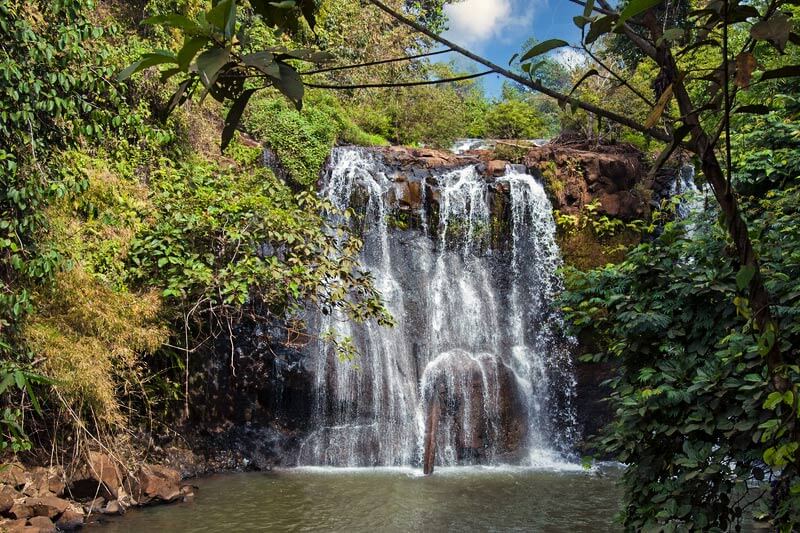
Cha Ong Waterfall
- Location: 6 km northwest of the provincial capital Banlung in the middle of the jungle in the village of Cha Ong, which is also inhabited by the indigenous Kreung people.
- Height: At 25 meters, the highest waterfall in the area. The water comes from Mount Phnom Svay, another popular excursion destination around Banlung.
- Special features: There is a cave behind the waterfall. A staircase leads visitors to the foot of the waterfall. If you like, you can buy snacks and local souvenirs there.
Phnom Svay (Berg Eisey Patamak)
The hill Phnom Svay, also known as Eisey Patamak with the pagoda of the same name, is located approx. 2 km west of the provincial capital Banlung. On the way to the top of the mountain, visitors pass the Eisey Patamak pagoda with a large reclining Buddha statue.
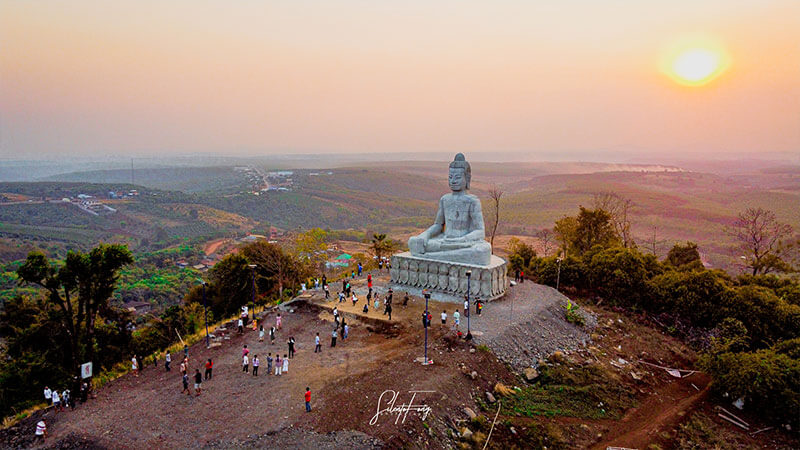
At the top of Phnom Svay, there is an impressive view over the country. The beautiful sunsets are particularly popular. To the west, you can see the village of the indigenous Kreung people. Towards the south-east you can see the surroundings of the many waterfalls.
Veal Ram Plang
Located 14 km from the town of Banlung, the village takes its name from the son of a hill tribe chief who lived in the area at the time. Today it is a field of flowering wild plants and a crystal-clear stream. Legend has it that Veal Ram Plang was the playground of the local tribal children long ago. A kind of plateau between the mountains, especially for flying kites. One day, Ram Plang lost his kite in the branches of a high tree. He tried to bring it down, but Ram Plang fell and died. His body was buried together with his kite. Later, the beautiful long kite became a river, which has survived to this day.
Since then, the ethnic minorities have come to this place on the anniversary of Ram Plang’s death. They commemorate him with a ceremony to honor his spirit.
Airavata Elephant Foundation
The Airavata Elephant Foundation is located south of the Kachanh waterfall – approx. 10 km from Banlung. Bak Maï, one of Cambodia’s most famous elephants, used to live there. He came to the Foundation in 2016 following a tragic accident in which his mahout at the time died. Sadly, Bak Maï passed away suddenly in May 2020 at the age of 36.
Die Elefanten der Airavata Elephant Foundation können in der Wildnis nicht allein überleben. Die Foundation bietet Besuchern verschiedene Programme wie “Fun-Time im Urwald”, “Elephant Spa”, “Mahout für einen Tag” und weitere.
Noel – the first baby elephant
On December 26, 2021, Noel saw the light of day at the Airavata Elephant Foundation. Since then, he has been keeping the keepers on their toes :)
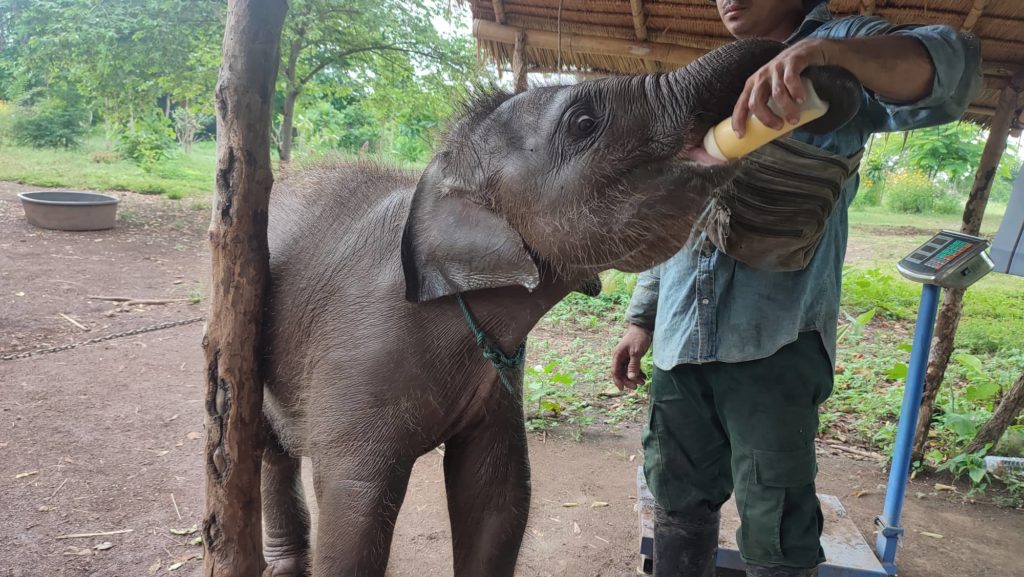
Wedding with elephants
Airavata’s aim is to give the elephants back their place and dignity in Cambodian society. This is one of the reasons why the foundation, in cooperation with Terres Rouges Lodge, makes an original Khmer wedding in front of a real elephant backdrop possible. Just imagine: The most beautiful day of your life under the best omen and blessed by the largest land animals in the world. Oh <3
Nature reserves & national parks in Ratanakiri
A total of 13 national parks are spread across the various provinces in Cambodia. Two of them are in the province of Ratanakiri.
Virachey National Park
Declared a protected area in 1993, Virachey National Park (approx. 60 km north of the provincial capital Banlung) is located in the north of Ratanakiri and extends across the border into neighboring Laos and to the east into neighboring Vietnam. At around 3,400 m², it is the largest national park in Cambodia and one of the two national parks that belong to the ASEAN Heritage Parks. In total, Virachey National Park and the two neighboring countries cover an area of around 7,000 m². At 1,500 m, Phnom Yak Youk is the highest mountain in this region. The park is home to numerous bird species. Gibbons are also at home here, as are elephants, tigers and bears. The latter, however, are rarely seen in front of the camera.
Veun Sai Siem Pang National Park
The park, most of which is located in Virachey National Park, is named after the two villages of Veu Sai in the east and Siem Pang in the west. The northern yellow-cheeked crested gibbons live between them. With over 10,000 individuals, the population in Cambodia is one of the largest of this species. It’s hard to believe, but this species was only discovered in 2010, or rather “separated” from the Southern White-cheeked Crested Gibbon due to its characteristic song.
The highlight in the national park are the guided tours to the gibbons and overnight stays in luxury tents (glamping). The proceeds support the local community. And if you like, you can even book a private chef from the community. Merlin and Philipp from Kambodscha-Touren, among others, offer a tour there.
Lumphat Wildlife Sanctuary
The Lumphat Wildlife Sanctuary is located about 50 km south of Banlung. The area of around 2,300 square meters is part of the Mondulkiri Wildlife Sanctuary. According to a WWF survey, around 100 different bird species live here. These include rare species such as green peacocks, Sarus cranes and giant ibises.
If you want to know more about the wildlife in Ratnakiri: Wikipedia has a list of the wildlife species living in Ratanakiri.
Tour offers in Ratanakiri
It is not permitted to explore Virachey National Park on your own. Only certified tour operators are allowed to explore the area with small groups. It is therefore worth asking in advance whether you have such a license. Such licensed tours and offers are usually affiliated with the Community Based Ecotourism (CBET) project.
Incidentally, all visitors are registered before they enter the park. Entry to Virachey National Park costs 10 per person per day, although this fee is already included in the price of the tours. Some operators only take their guests to the outer areas of the park in order to save on the additional fees and to be able to offer their tours more cheaply than the competition.
- German-speaking offer with Cambodia tours – the two operators Merlin Trau & Philipp Schlund live in Banlung
- 2-4 day tours in the Voen Sai Siem Peng Conservation Area (VSSPCA), e.g. with Ratanakiri Smiling Tours
- You can find further offers as part of the CBET on the TourismCambodia.com website
- Jungle Glamping in Voen Sai Siem Pang National Park, Young Pioneer Tours. The luxury tents are located right next to the gibbon research station.
- Banlung Nature Tours: The program includes “Gibbon Tour”, “Koh Peak Tour” and “Kokla Park Tour”.
- “Cambodia Tour Guide” under the direction of Davinn Chhim. Also offers tours throughout Cambodia.
- “Cambodia Round Trips” under the direction of Sascha Niederhauser, he is a cooperation partner of Davinn Chhim.
Hotels & Guesthouses
Affordable
The Ratanak Tep Rithea Homestay approx. 1.3 km northwest of the center of the capital is particularly popular. A simple and yet rustic facility under private management. A room for 2 people is available from just USD 6. Breakfast per person for 2 USD. Lunch and dinner are also available for 2.50 USD.
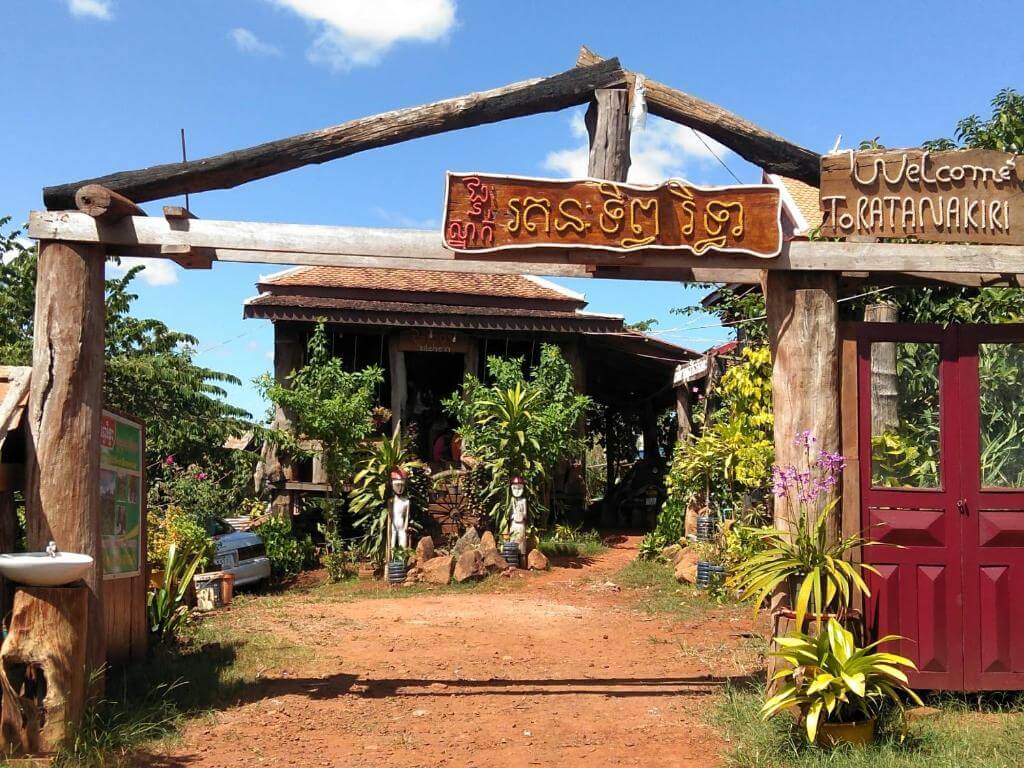
Upscale price range
Those who prefer more comfort are in good hands at the Yeakloam Hotel & Spa in the city center. After a day trip into the surrounding countryside, the hotel’s own pool is a welcome refreshment. But above all, the 4* hotel attracts guests with its Skybar, which is located at the highest point in town. Sundowner lovers get their money’s worth here. Cocktails are served until 11 pm. A room for 2 people is available from 79 USD.
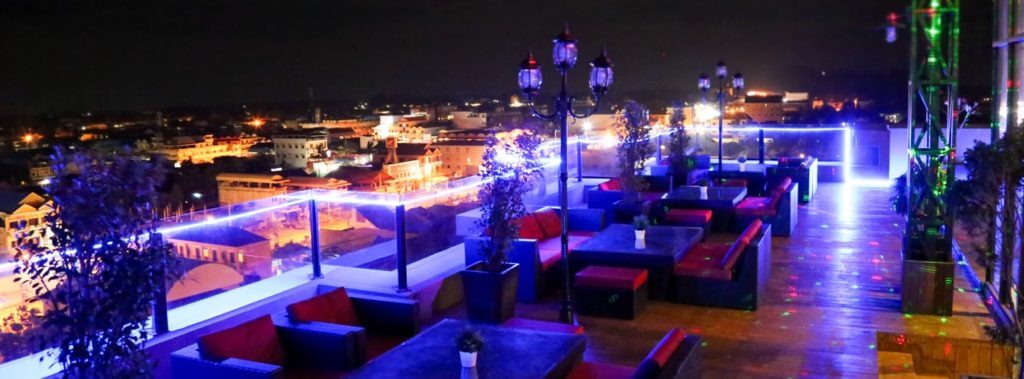
Food & drink
If you want to try a typical dish from Ratanakiri, there is no getting around chanang (ចាណាង). It is a soup consisting of beef skin, beef bones, chanang leaves, mushrooms, peppers and spices, which – after cooking for several days – is eaten with rice or noodles as desired.
The Green Carrot, a kind of trendy hotspot in Banlung with good food at low prices, is popular. For a romantic dinner, we recommend Pteas Bay Khmer with a beautiful view of Kan Sen Lake. If you prefer vegan cuisine, Café Alee is the place to go alongside Western and Cambodian dishes.
Healthcare
As Ratanakiri is considered a malaria area, it is important to think about mosquito protection. Long pants and long-sleeved shirts or shirts as well as sturdy shoes are an absolute must, especially on trekking tours, to protect your health.
There are also still landmines. Stay on the paths and follow the instructions of the guides, especially on trekking tours.
Getting to Ratanakiri
- To the east across the Vietnamese border: At the Oyadav border crossing – approx. 70 km from Banlung. There are bus connections between the Vietnamese town of Plei Ku and Banlung. The journey takes approx. 5 hours. The visa on arrival applies when coming from Vietnam. For the opposite direction to Vietnam, you must already have the visa in your passport.
- There are buses from Phnom Penh to Banlung. The journey takes about 8 hours. Tickets can be purchased online via BookMeBus, for example.
- Private drivers, for example Yeang Buddy. I traveled through Cambodia with him in 2019 during the photo tour led by Andrea.
- Cambodia Travel Partner – the agency of my (Inga) friends Lily and Andre.
Overall, the infrastructure in Ratanakiri has been greatly expanded in the last 3 years, especially in the provincial capital Banlung. The entire road around the market in the center has been renewed and the new road around Kann Seng Lake is almost finished. The road towards Veun Sai has also been greatly improved. It is still a sandy road, but no comparison to the conditions 5 years ago.

Affiliate*
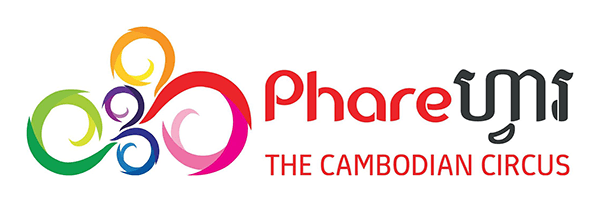
Phare, the Cambodian Circus
A highlight in Siem Reap! Buy tickets online directly on the Circus Phare website*.
Links and references with a * are an affiliate link (advertising link). If you like Visit Angkor and buy, book or subscribe to something via an affiliate link, the provider will make a small commission for Visit Angkor. Of course, there are no additional costs for you.
Join our Facebook group
International travel group with friendly people who love Cambodia. We speak English, German and a little Khmer.
By the way: We write here at Visit Angkor with a lot of passion and love. Nevertheless, it can happen that information is no longer up to date or perhaps even incorrect. We would be happy to hear from you so that we can update the information accordingly. Thank you very much!

